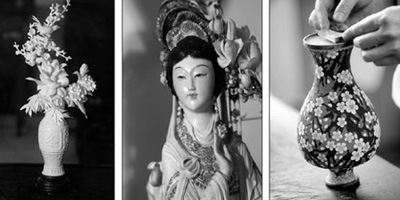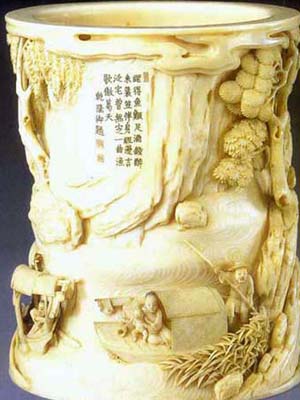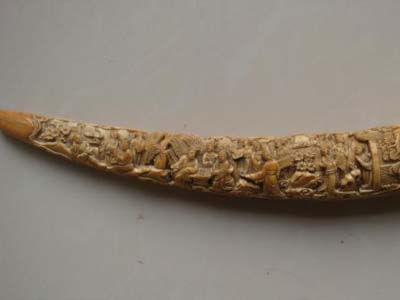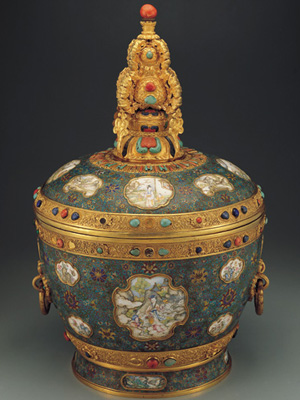Future carved out of traditions of the past
 |
|
Traditional crafts are under increasing threat as the number of craftmen is diminishing. [Wang Jing / China Daily] |
The government has moved to revive ancient crafts such as working with ivory and lacquer.
When Xiao Guangyi, head of Beijing Ivory Carving Factory, passed by a meeting room on Wednesday morning and saw five applicants waiting to be interviewed, he felt a little relieved.
It was the first time in more than 20 years the factory was recruiting apprentices and it received only about 40 applicants.
None of the five, most of them in their 20s, was experienced in ivory carving. All were attracted by media reports, saying the craftsmanship of ivory carving is facing extinction and that the factory needs apprentices.
"I have been interested in craft since I was young, and so I came," Fan Wei, 20, a student learning painting in Beijing, told China Daily.
"But now, I feel I may have to shoulder some responsibilities, too," pointing to the low number of applicants.
The media report that drew their attention is based on the government's latest move to try to save and preserve traditional craft. And ivory carving and carved lacquer are the first two items the government picked and will support with subsidies, said Qian Rong, director of Beijing Intangible Culture Heritage Protection Center.
 |
|
Ivory carving, traditional Chinese handicraft work |
"We look forward to those who will not only inherit the skills to be a good craftsman, but also have the potential to be a good artist," Qian was quoted as saying in Beijing Morning Post.
The number of craftsmen in various disciplines is diminishing, with many senior ones turning old and retiring.
At the 52-year-old ivory carving factory, Xiao said some masters are still carving past the age of 80.
 |
|
Ivory carving, traditional Chinese handicraft work |
"Ivory carving is in danger of being extinct if no one new wants to learn it," he said.
Ivory carving, which dates to prehistoric times, was one of the first 48 items listed on Beijing's Intangible Cultural Heritage in 2006 to protect these traditions.
The list also includes eight genres such as folk music, dances and traditional medicine. So far, 216 items have been listed.
The 1950s to 1970s were boom times for expertise such as ivory carving as these products sold very well abroad, supporting the city's economy while its industrial sector was being developed.
There used to be more than 800 craftsmen and staff in the ivory carving factory, but it began to shrink in the 1980s when international trade in ivory was banned. Today, there are only about 40 craftsmen left, Chai Ciji, a 60-year-old craftsman, said.
 |
|
Enamel, traditional Chinese handicraft work |
The Beijing Enamel Factory is another example. Established in 1956, it used to be a major contributor to the city' s economy because most its products were exported. Its exquisite enamel pieces were often given as national presents to visiting foreign leaders, said Zhong Liansheng, the factory's chief designer.


















